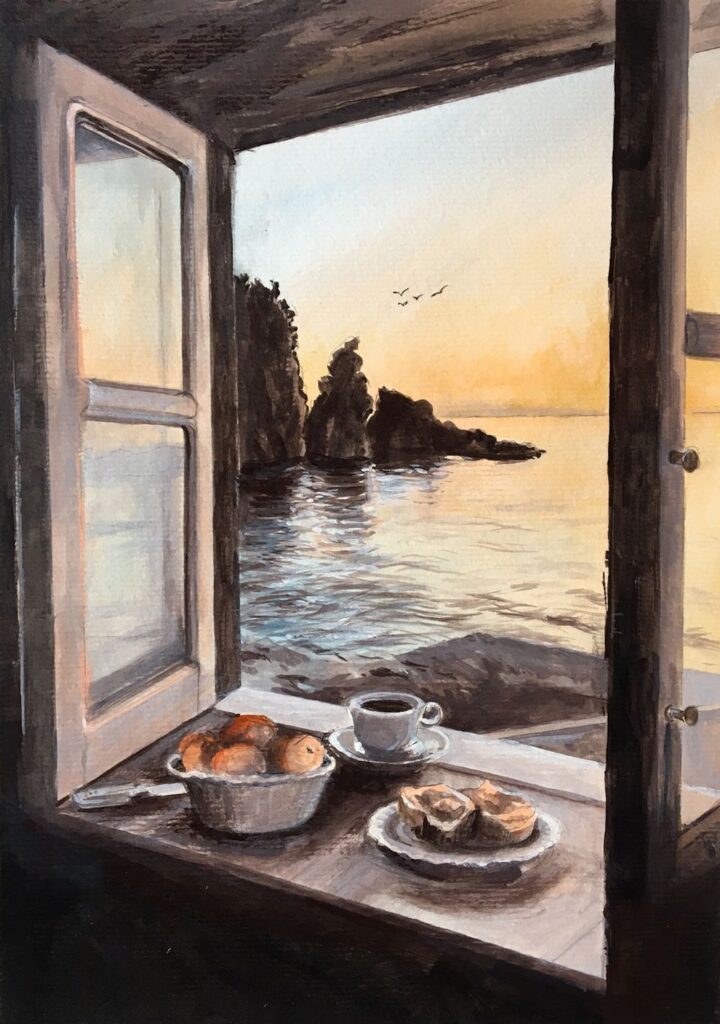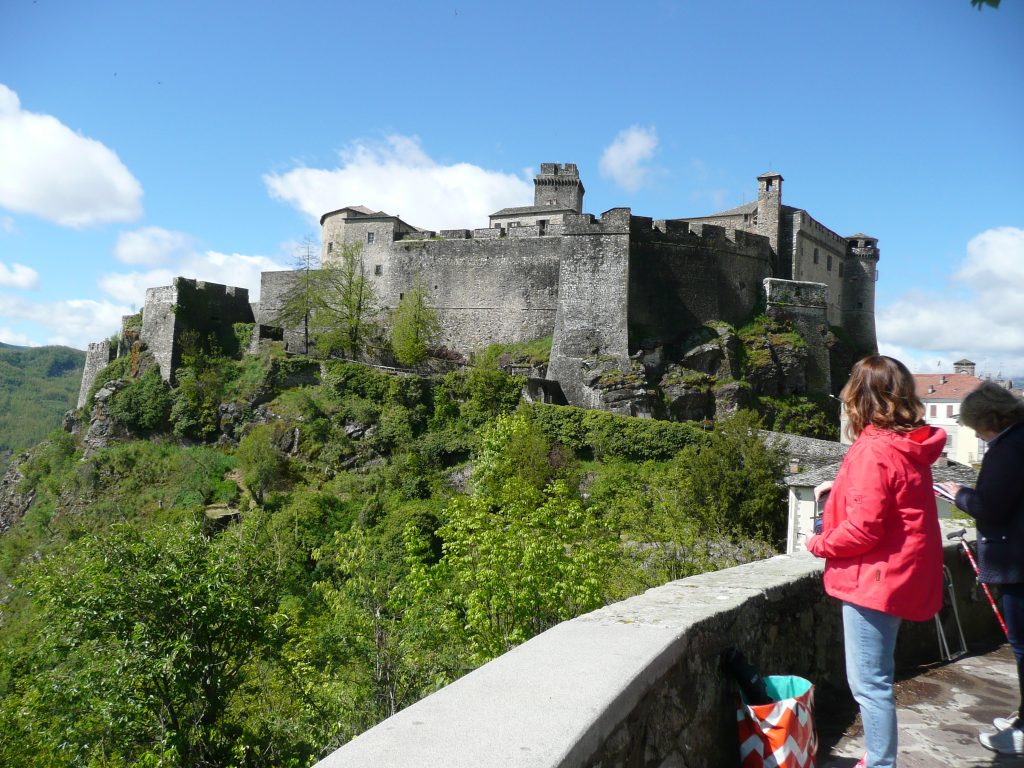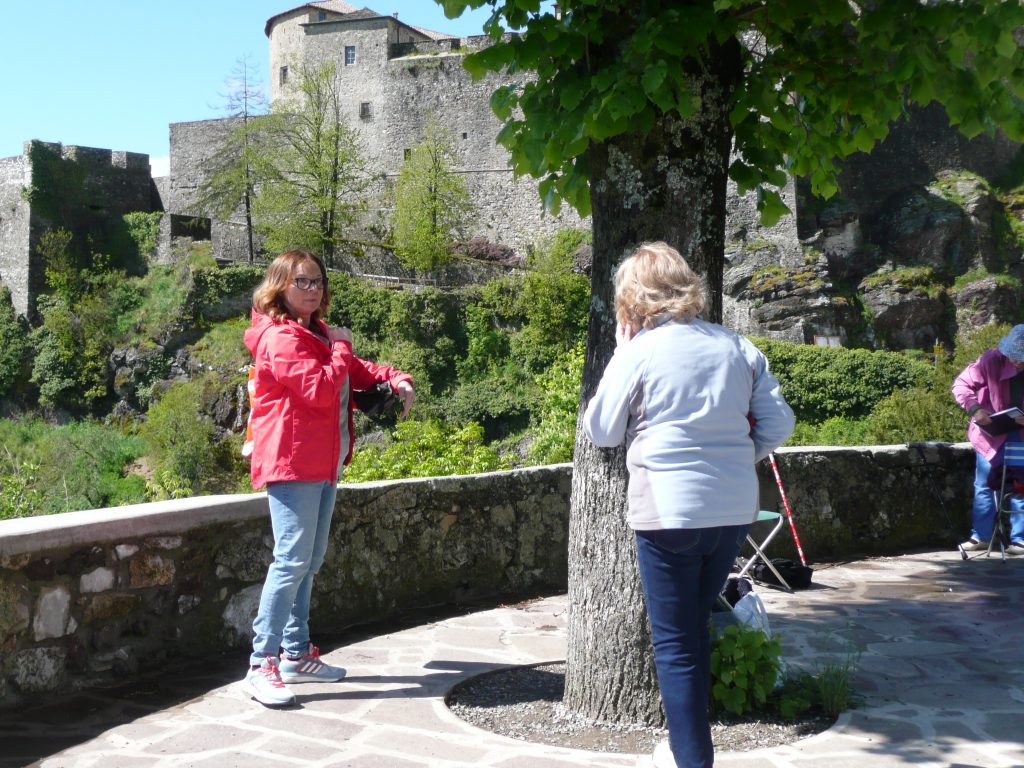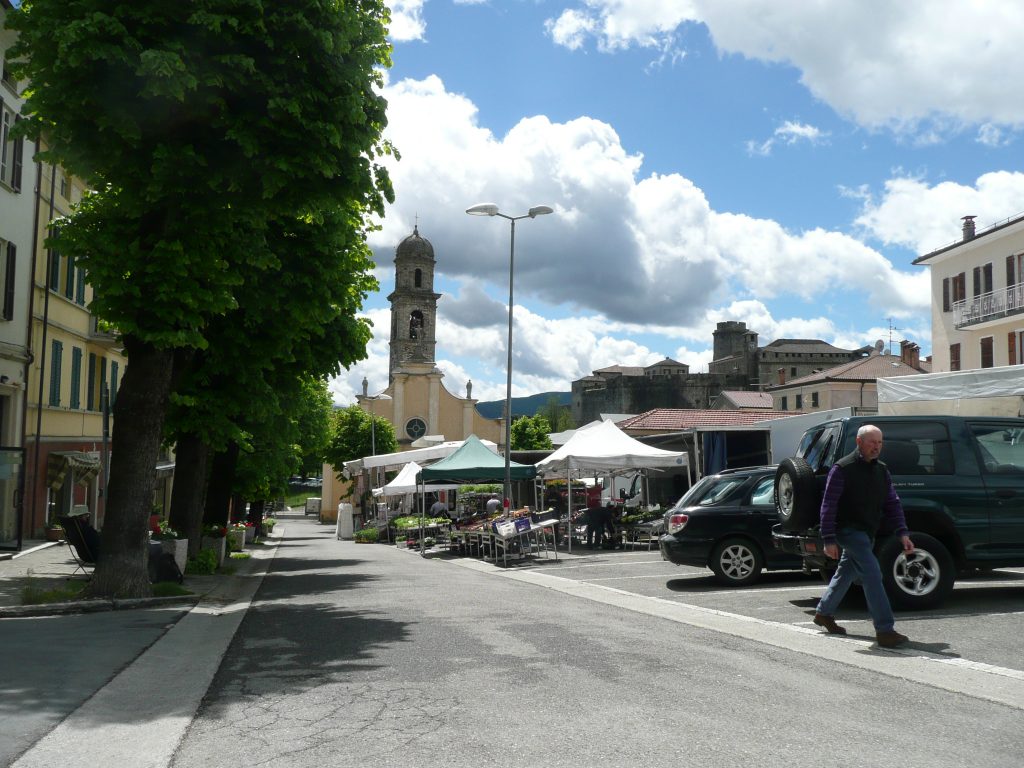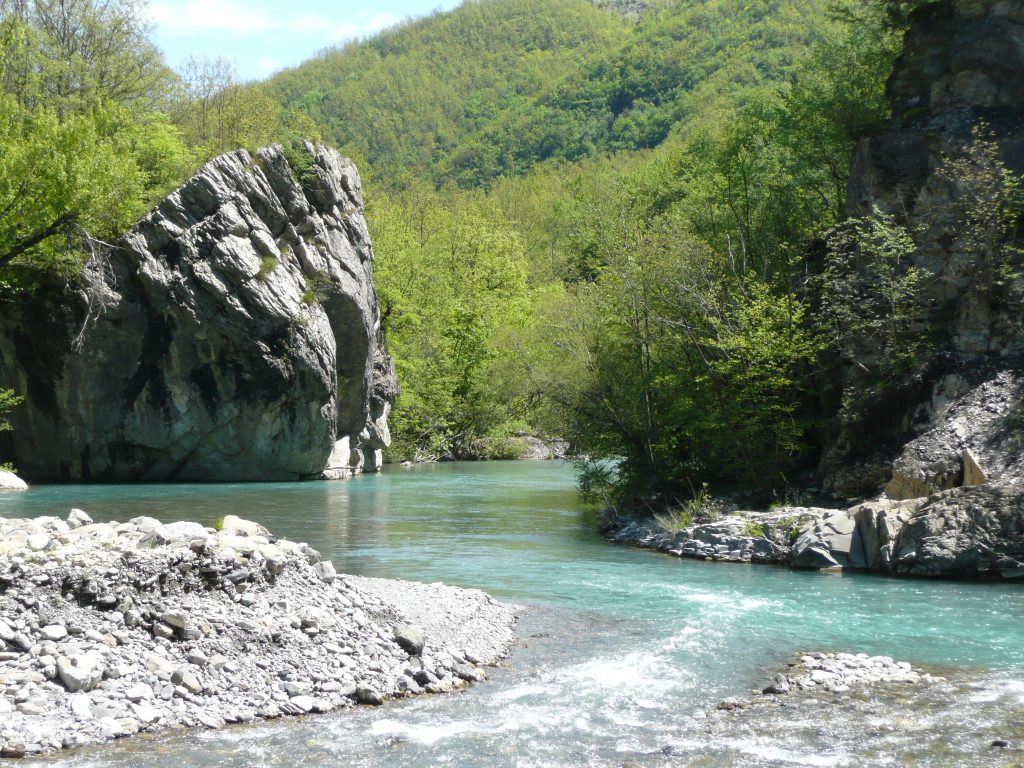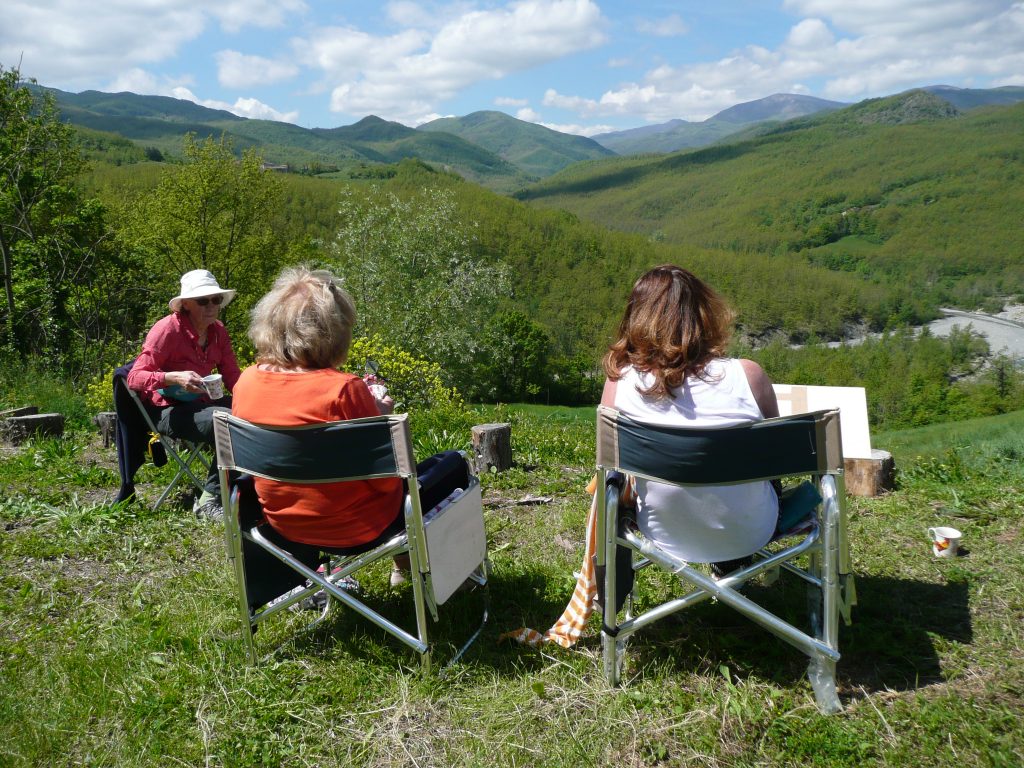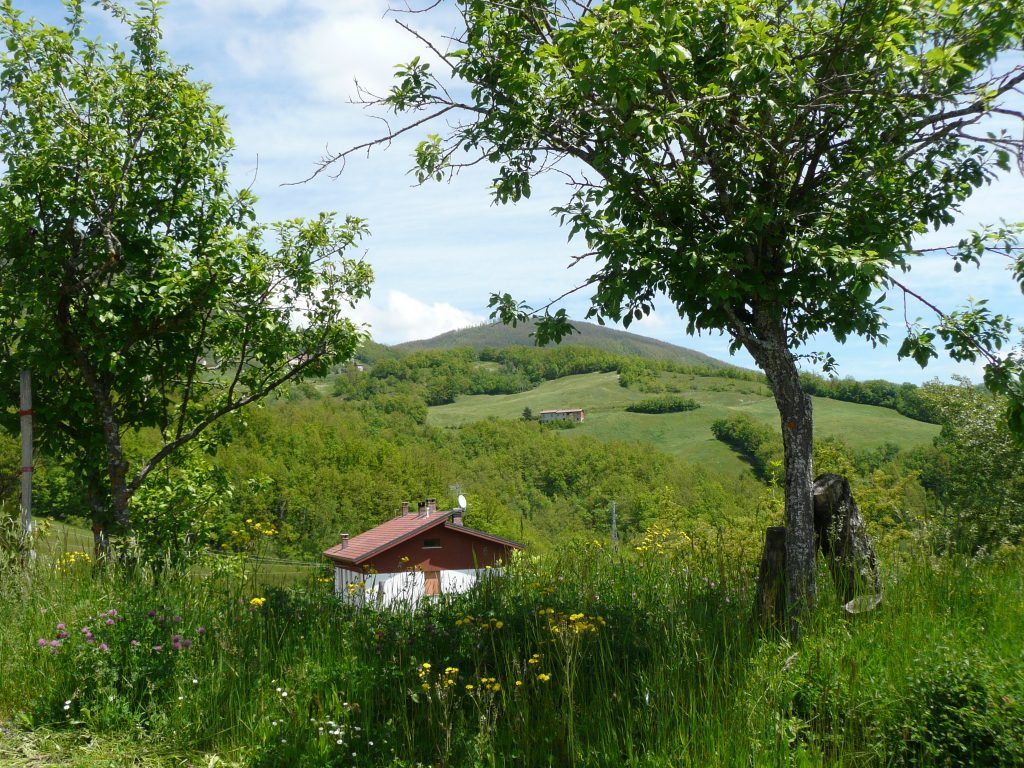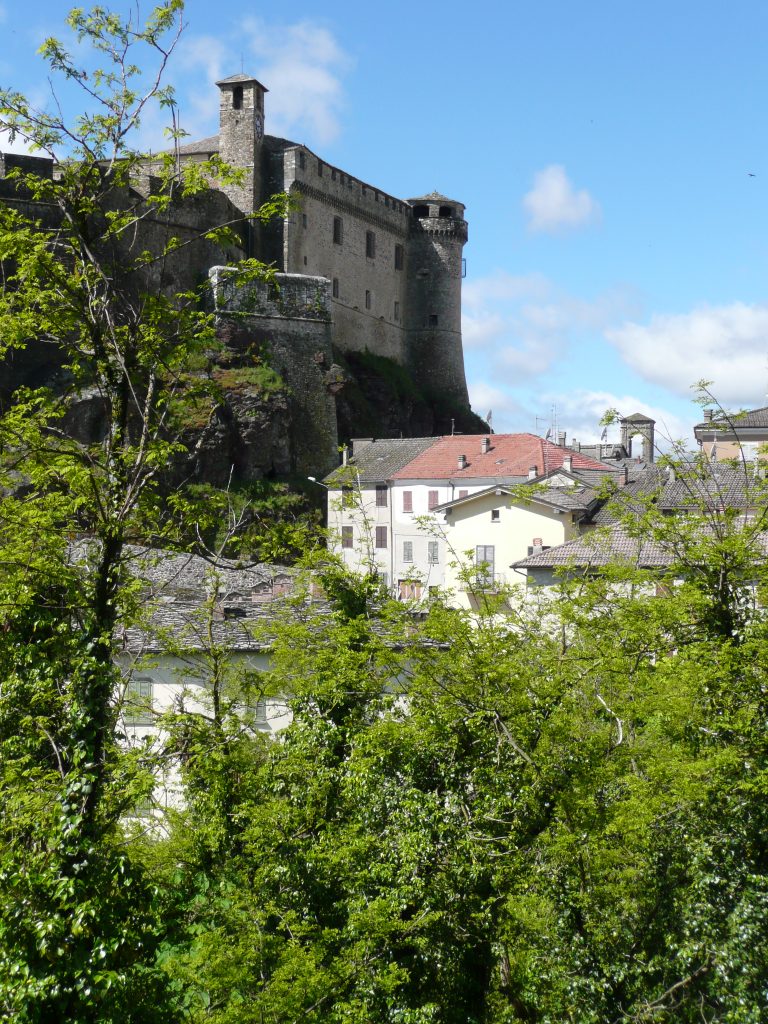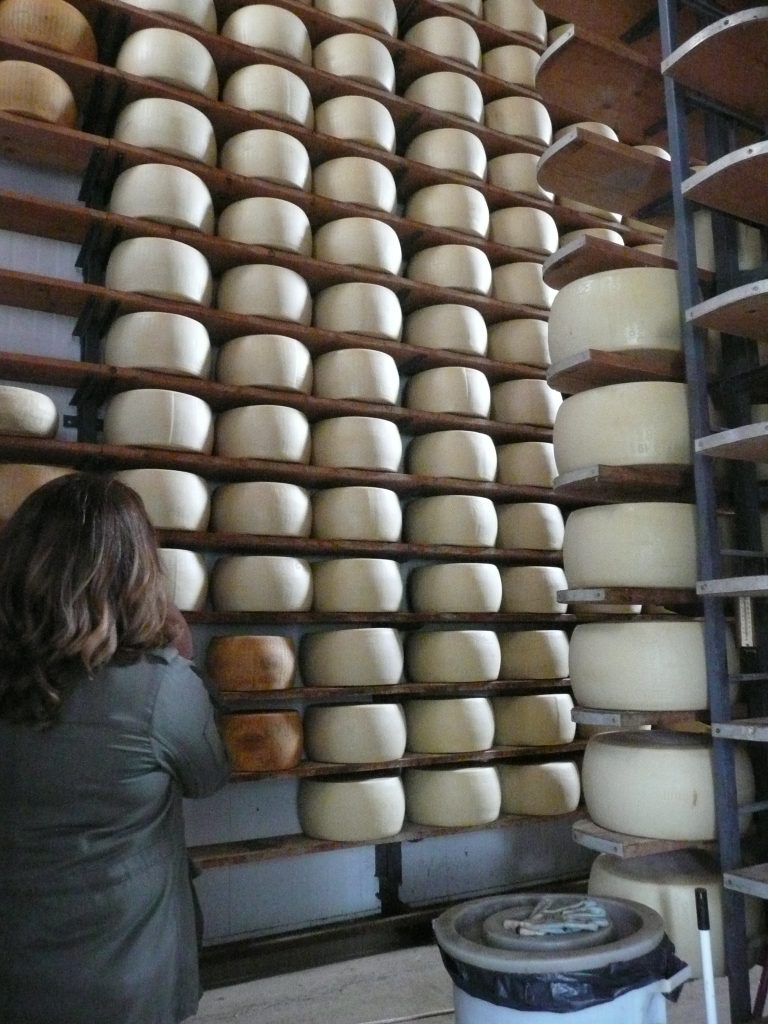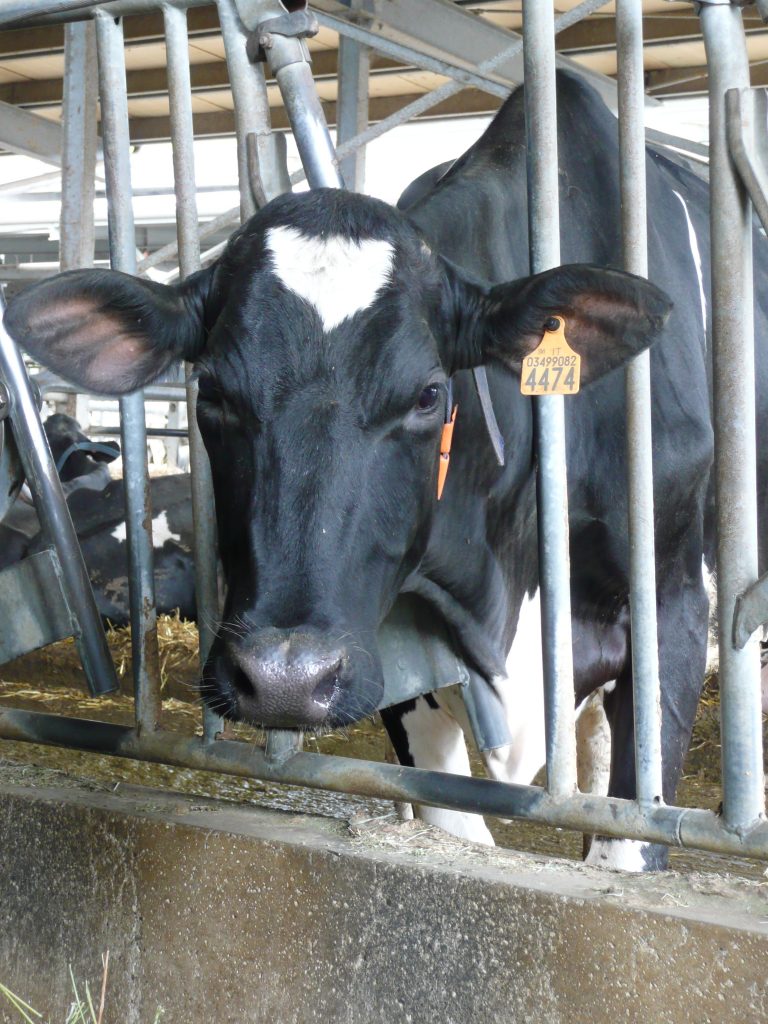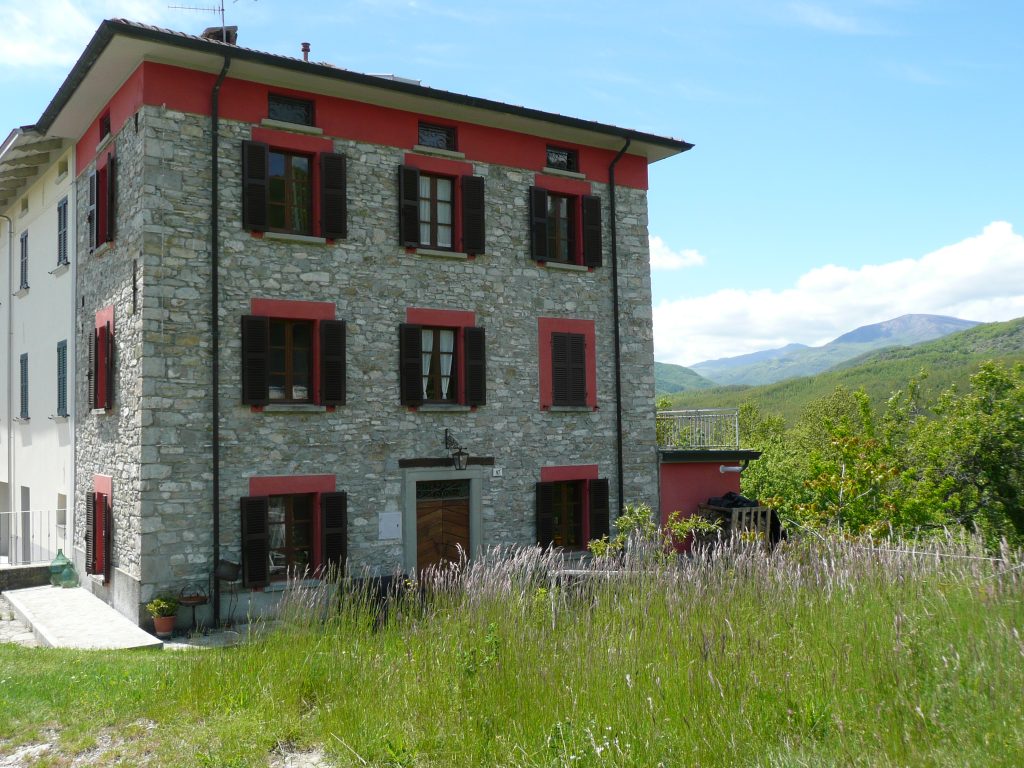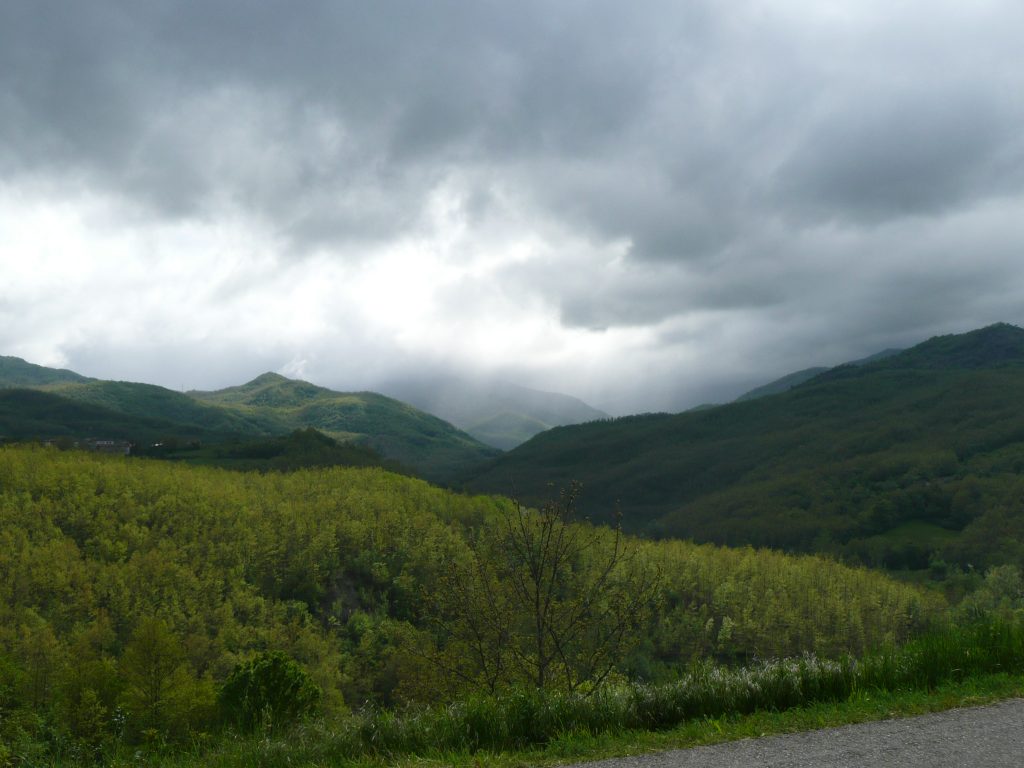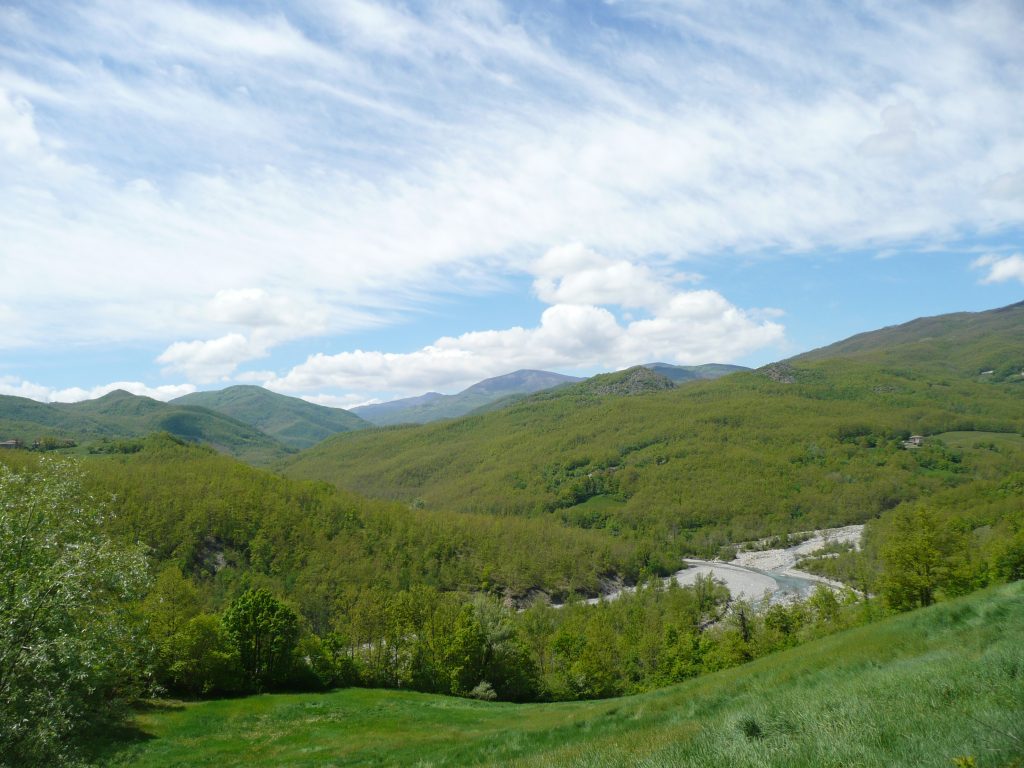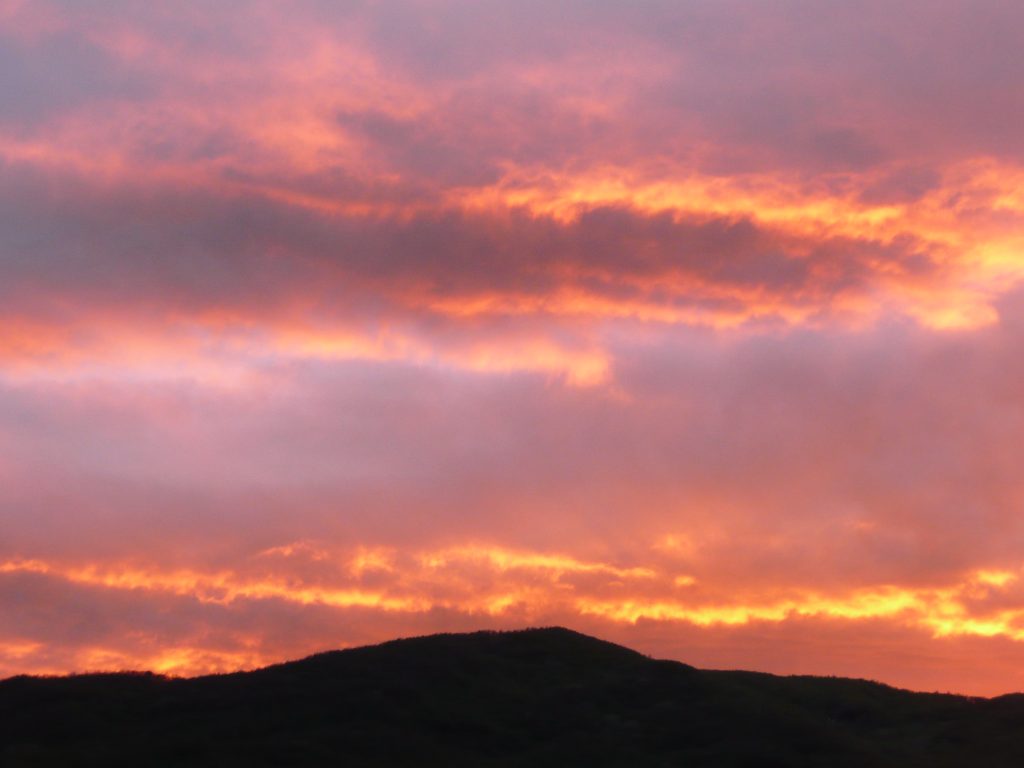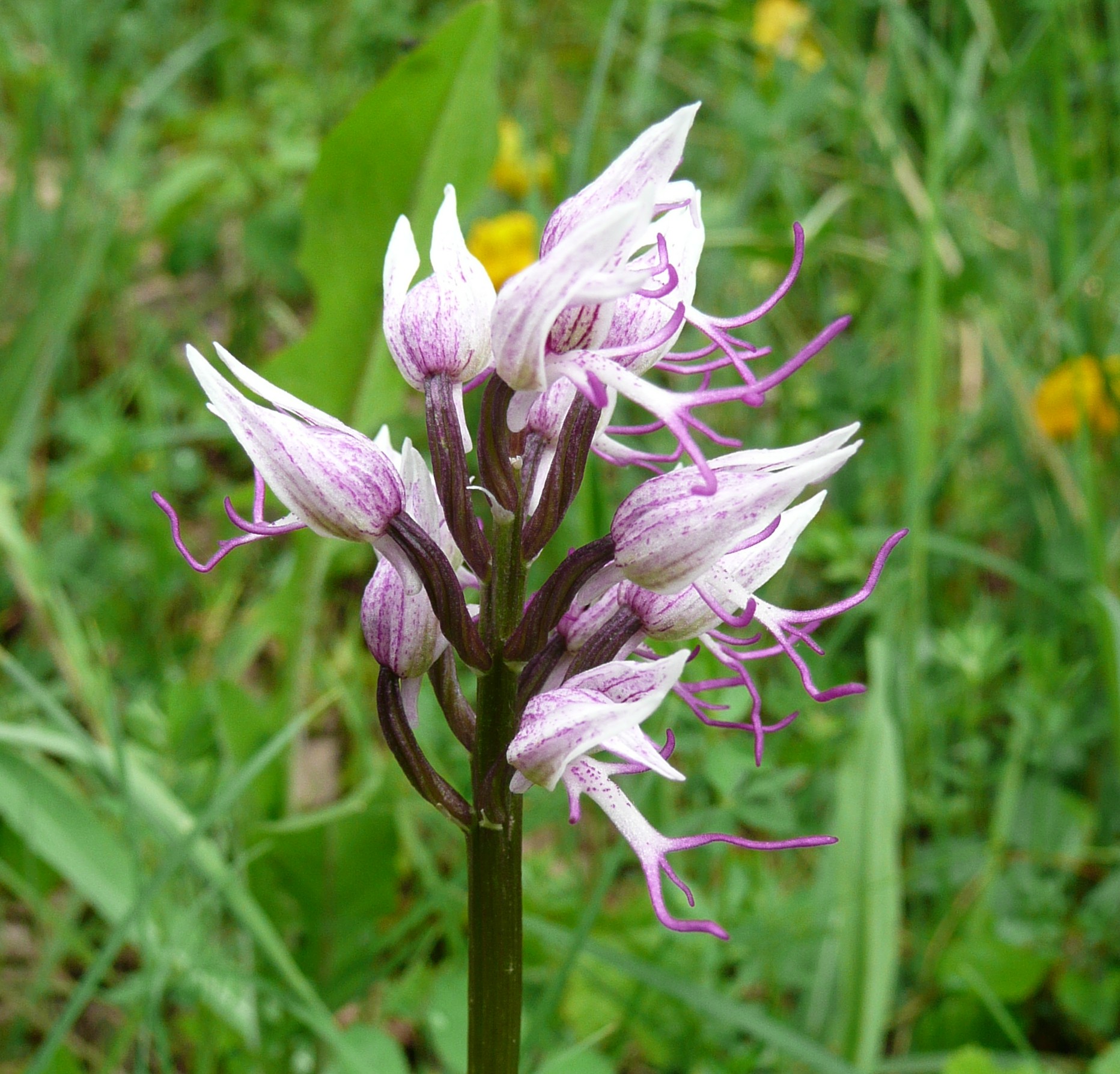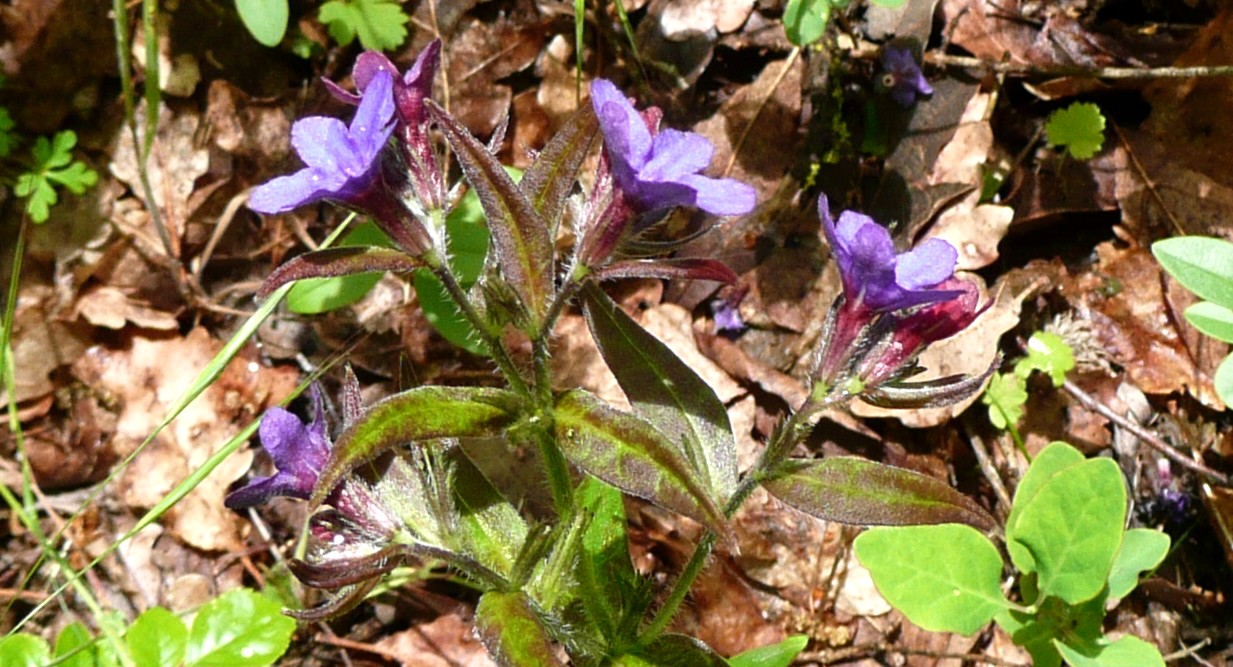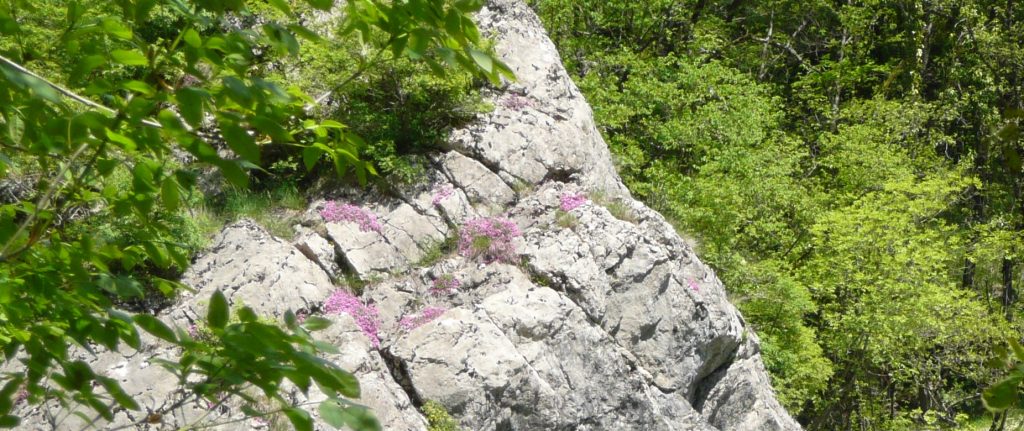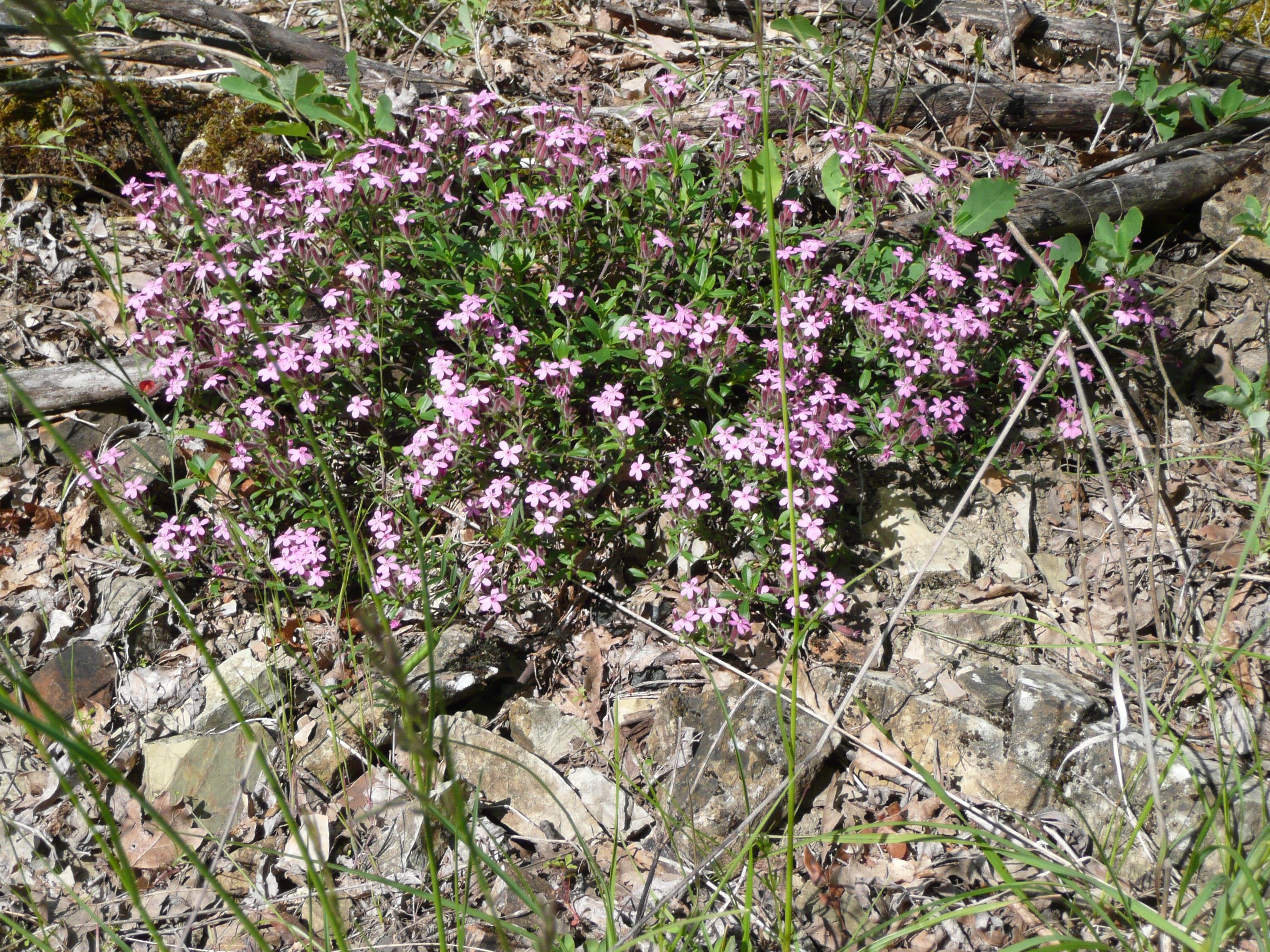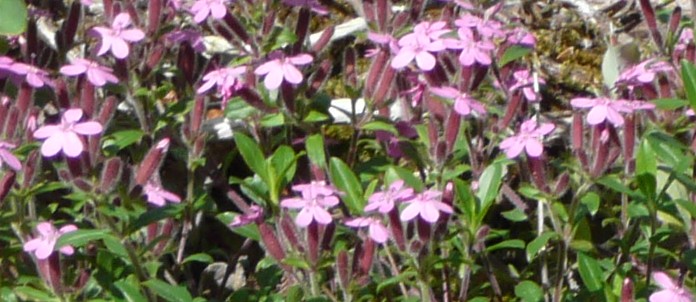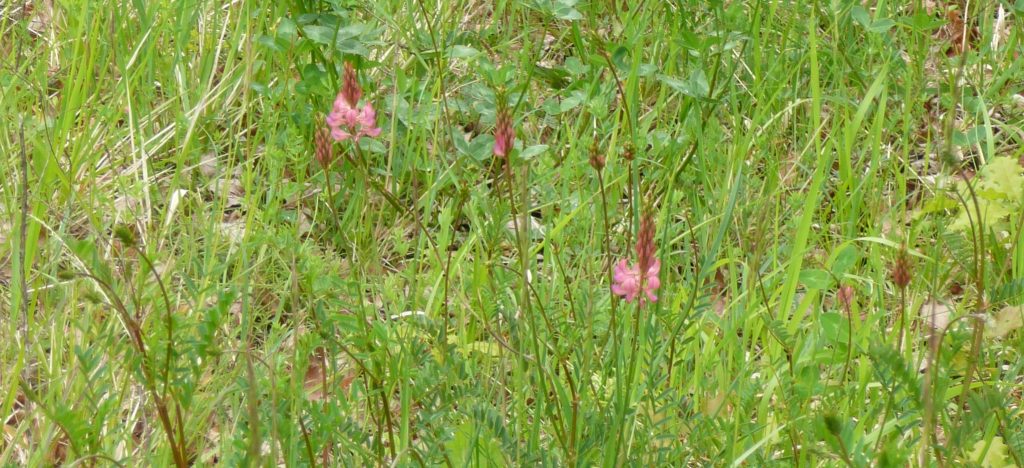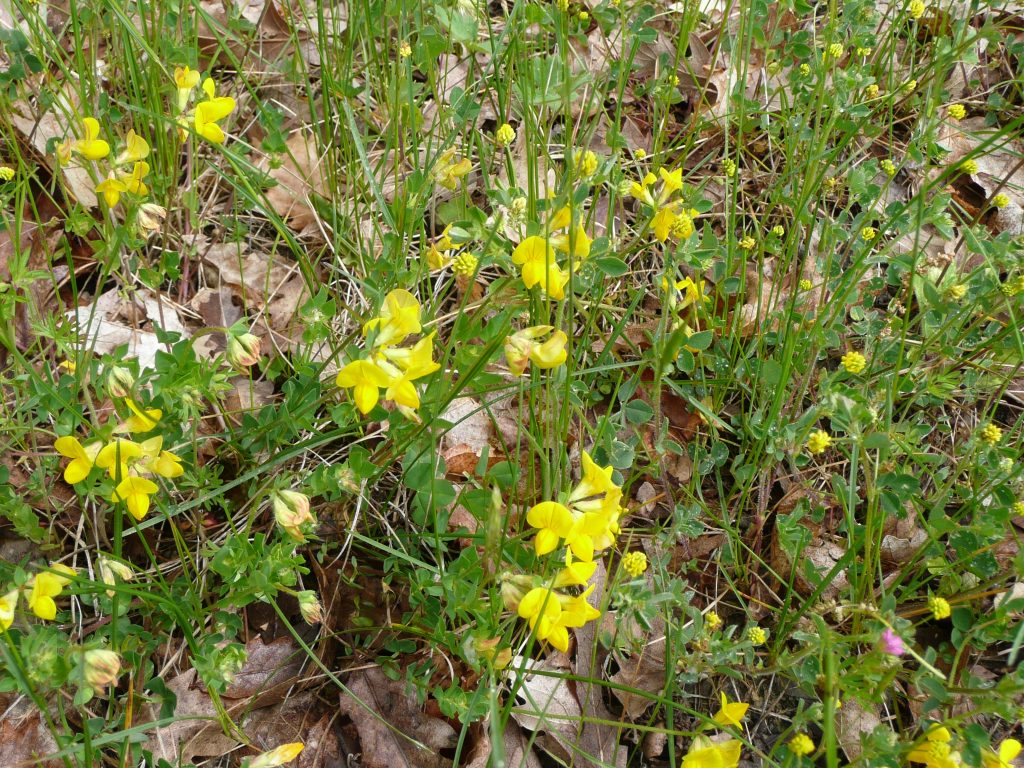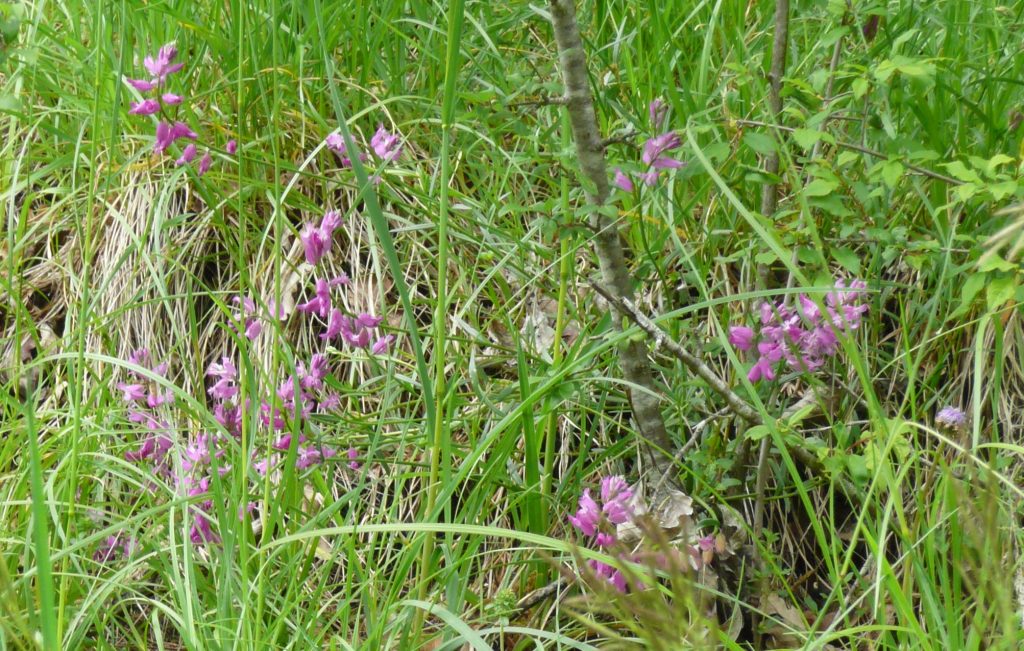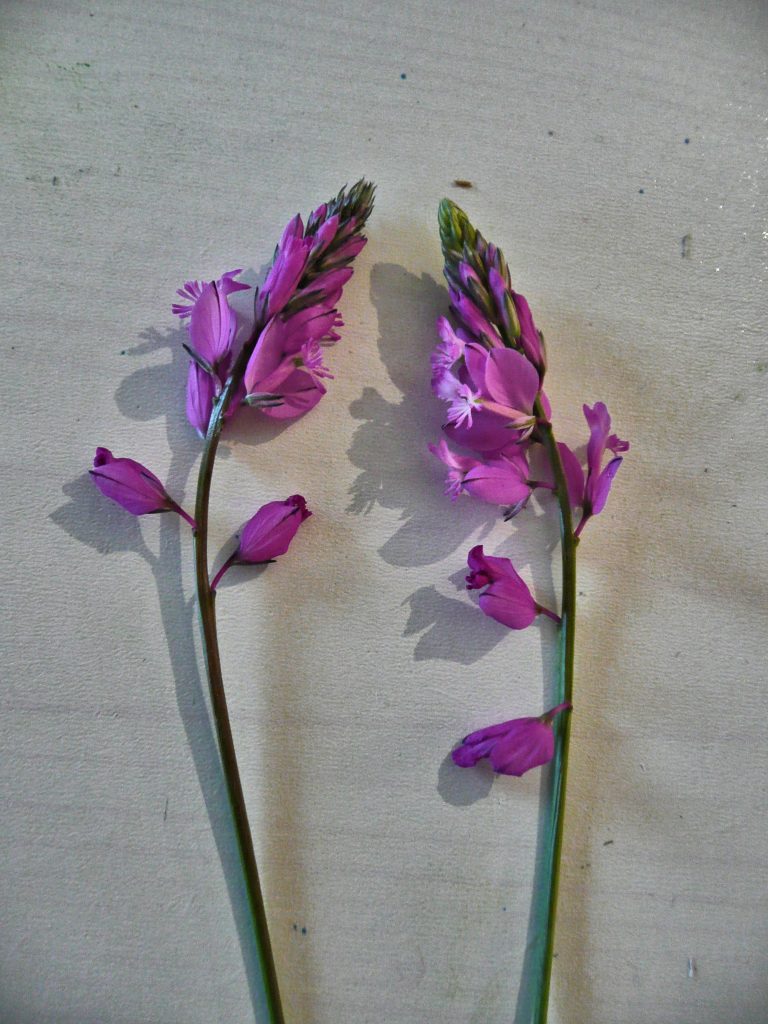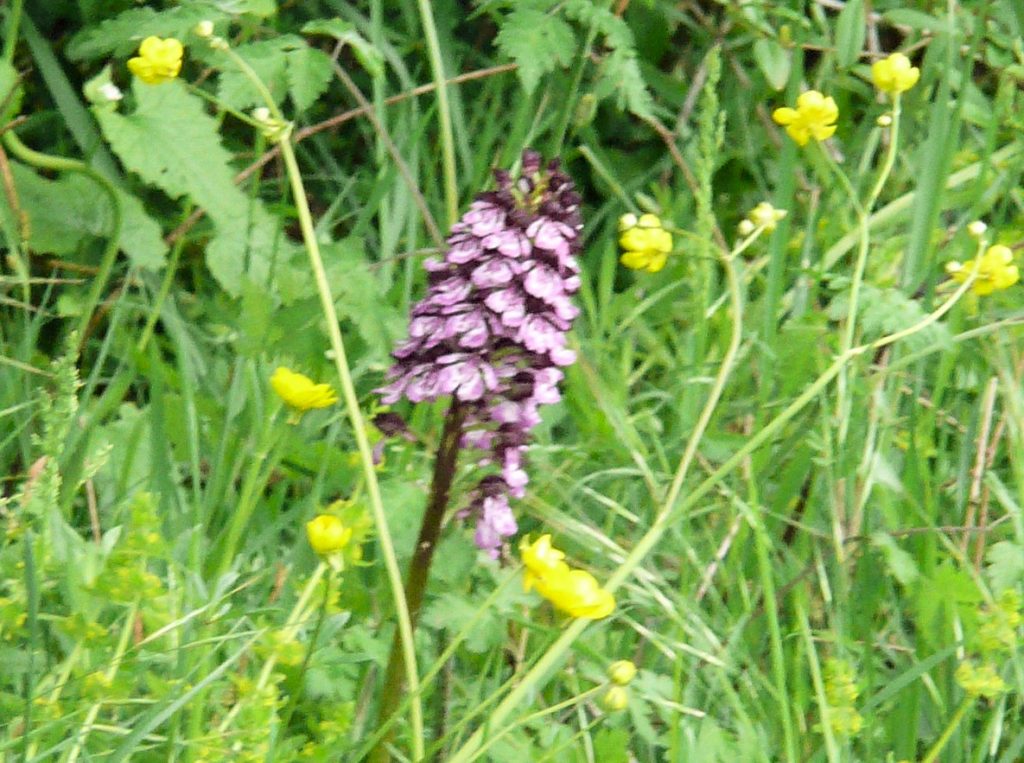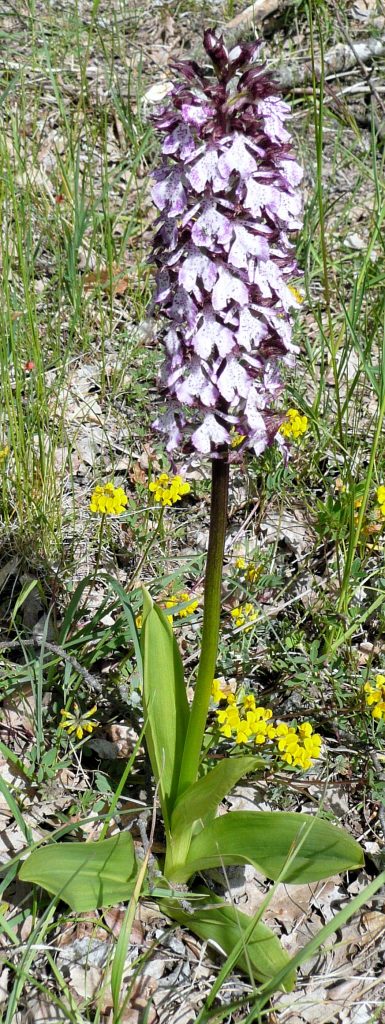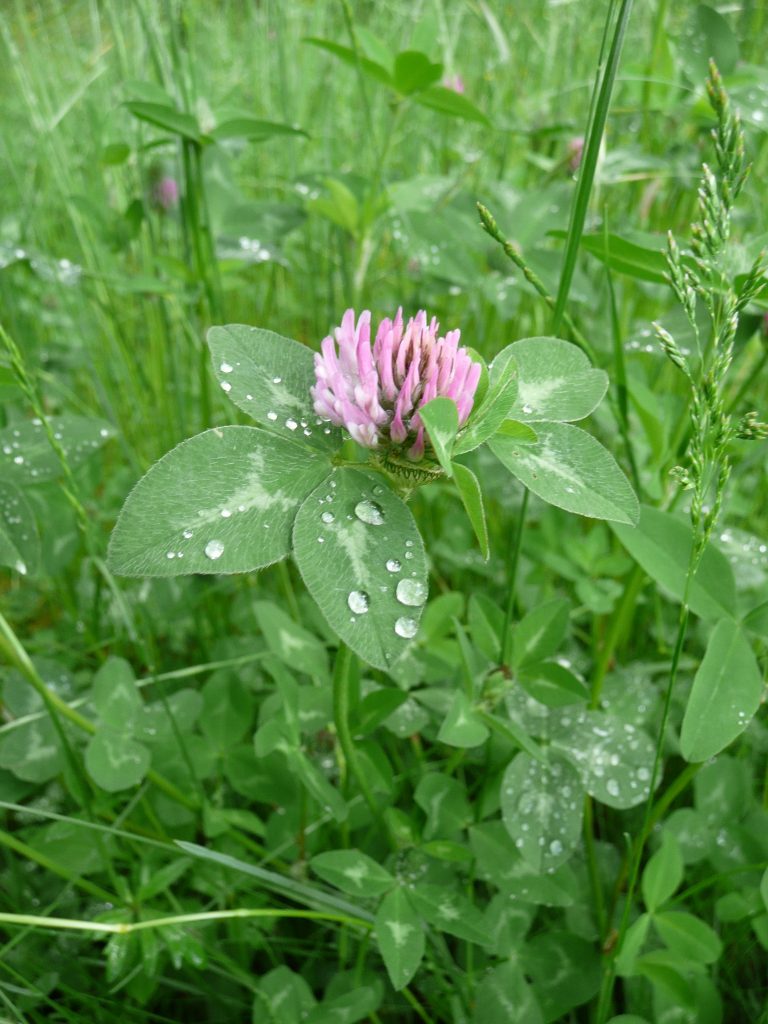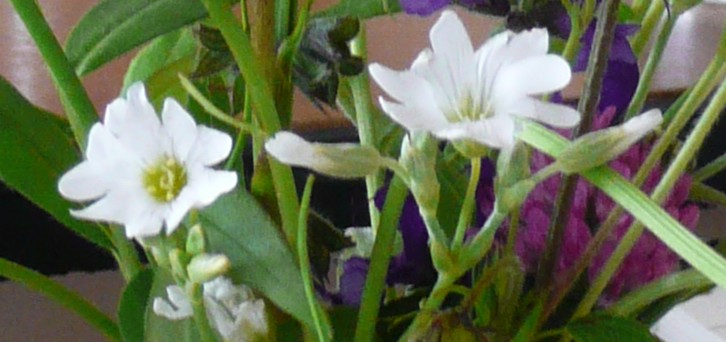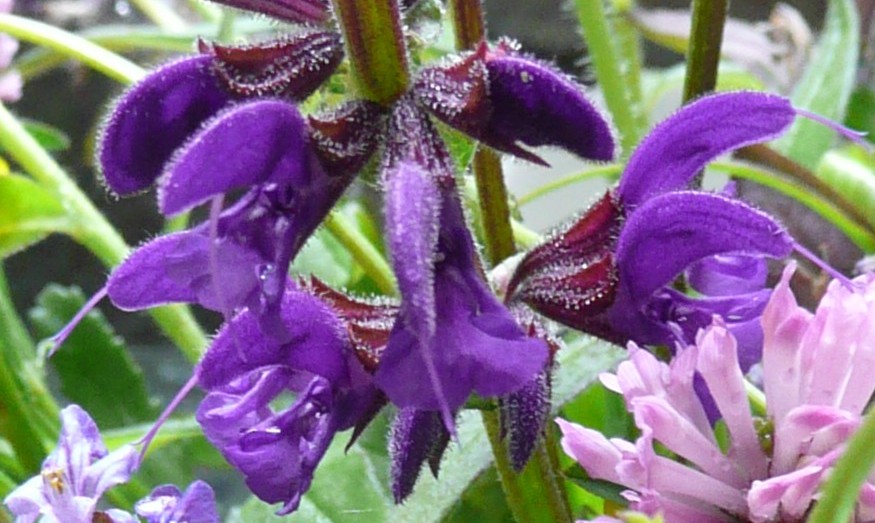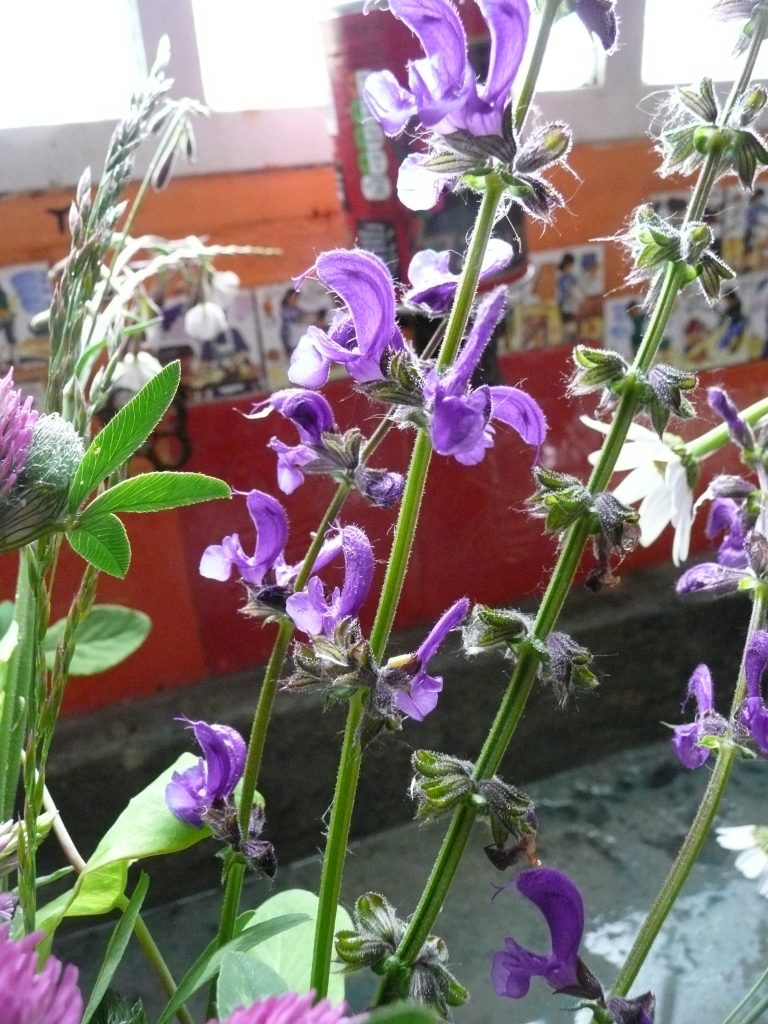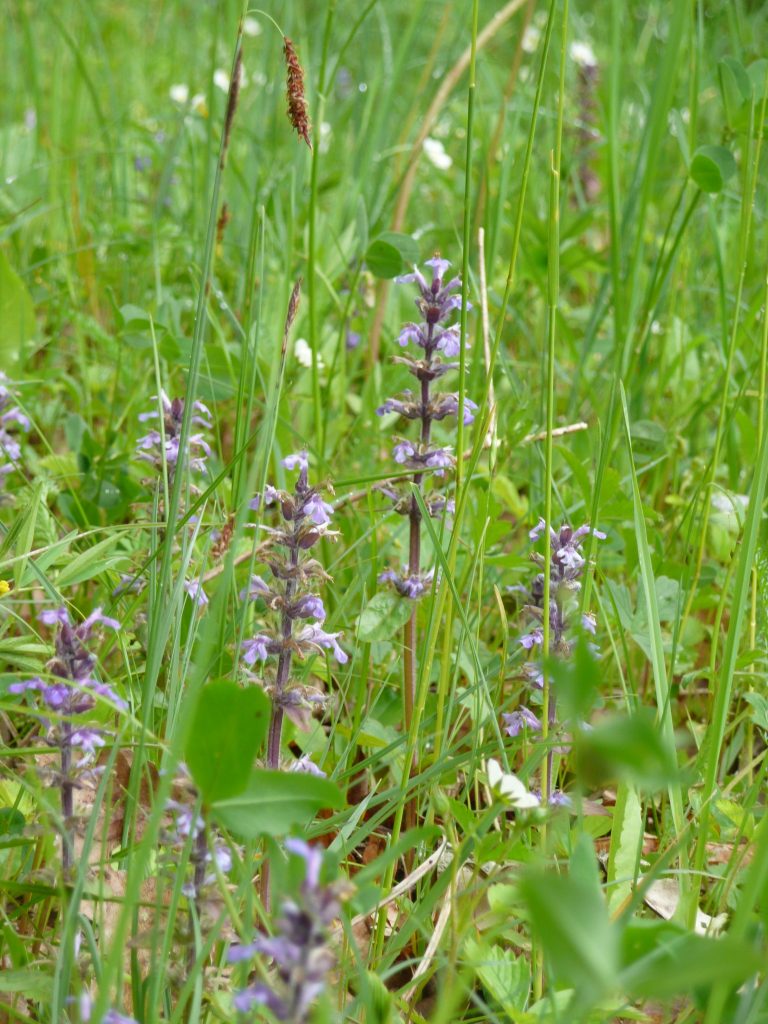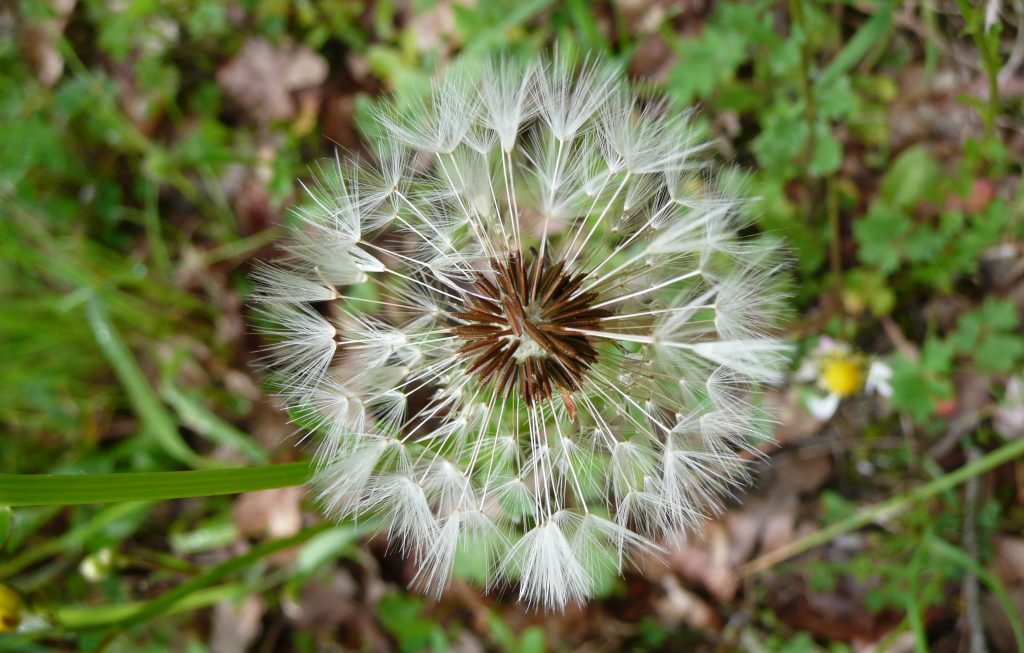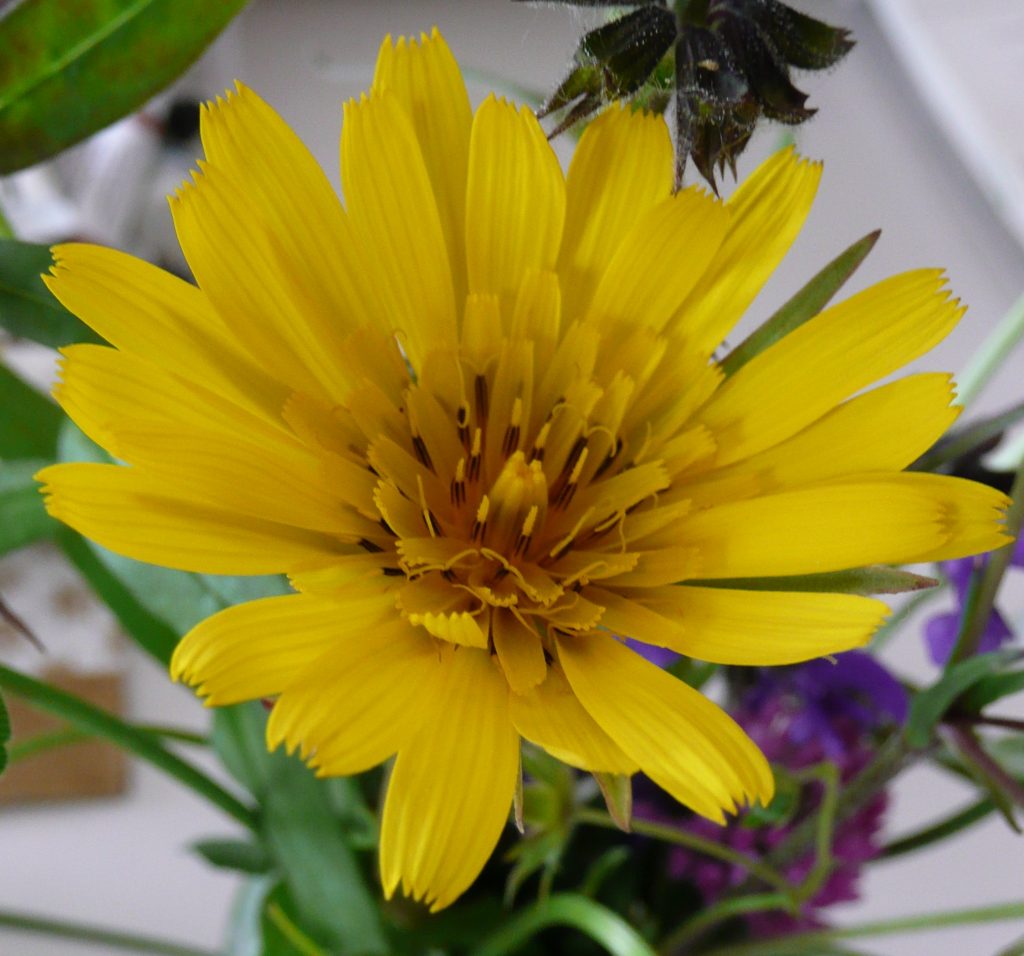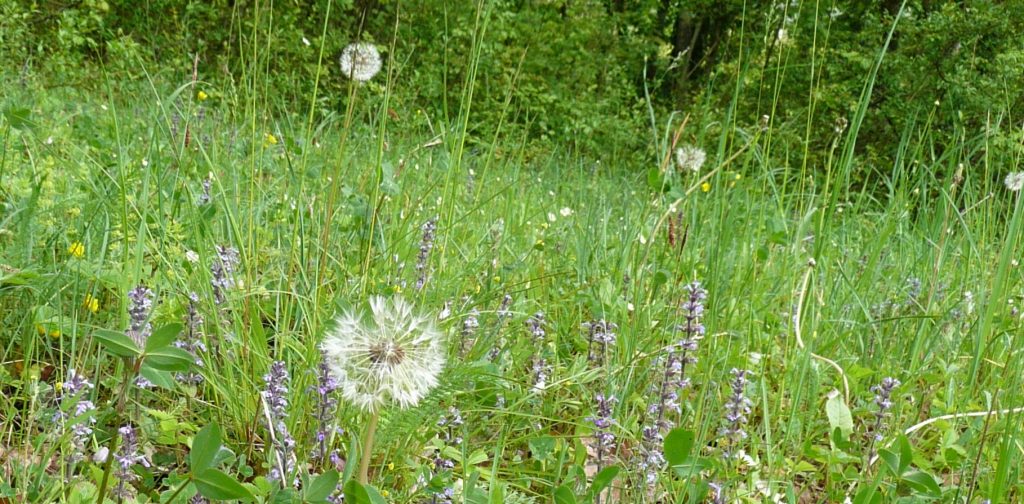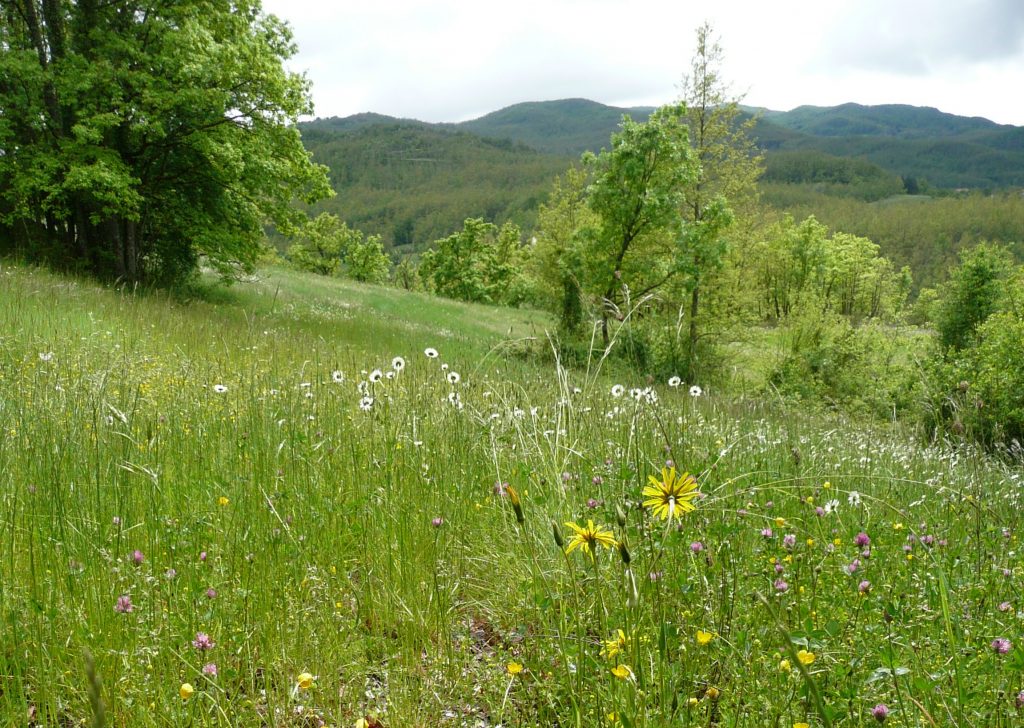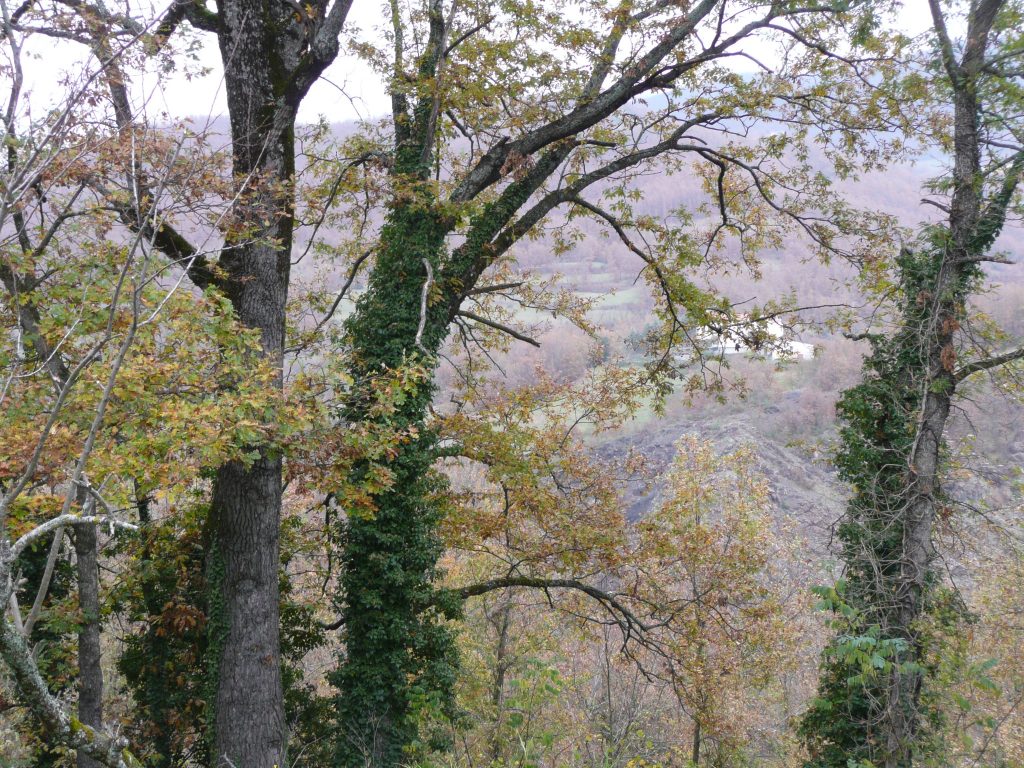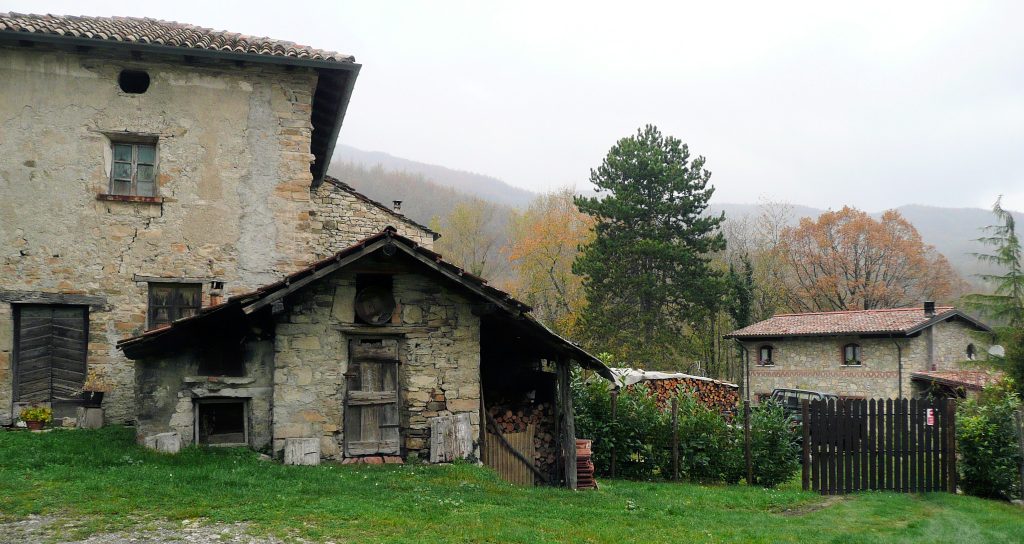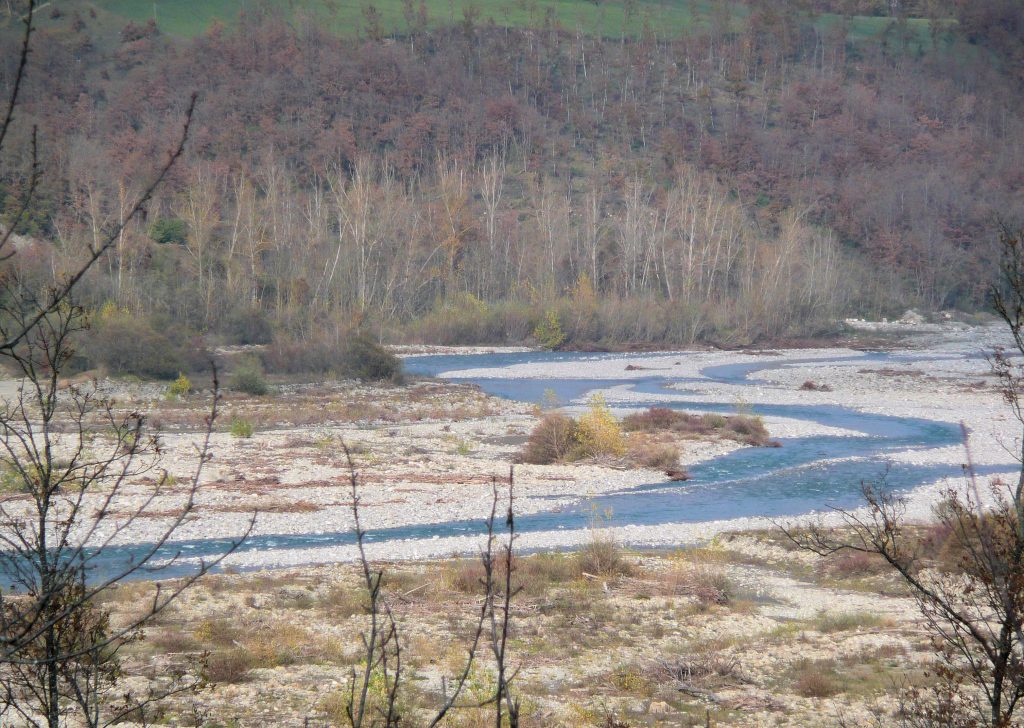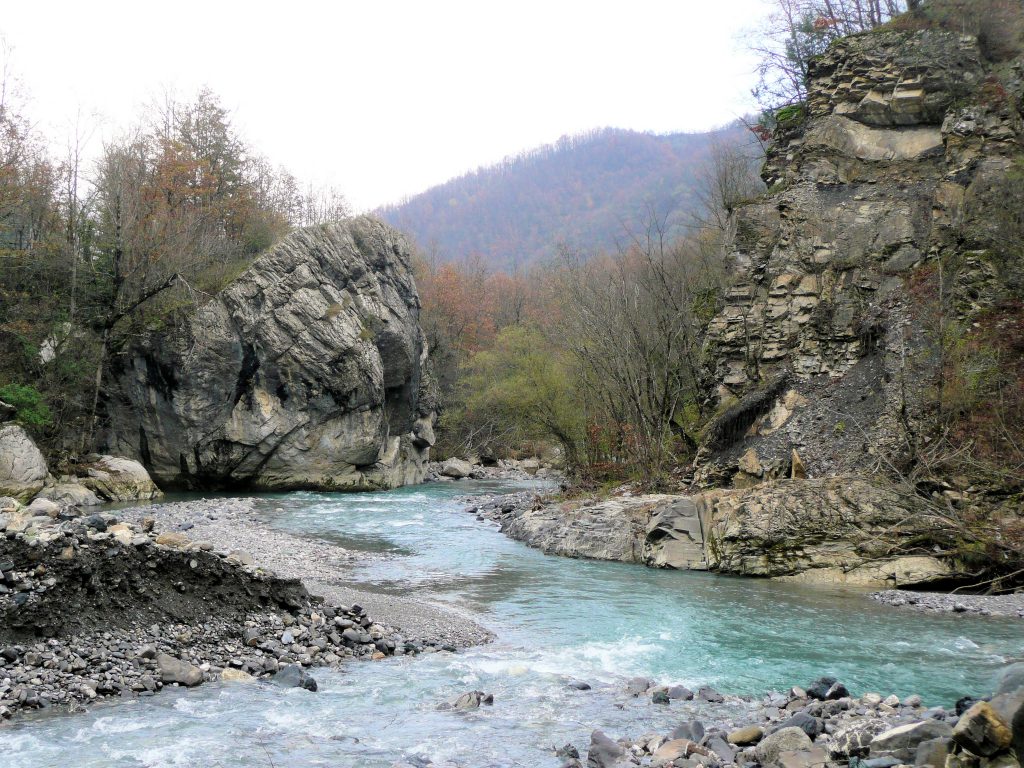Category Archive: Italy: in the Parma Apenines
Almost Monochrome Week 4
September 21, 2022
Every stage of a painting has its merits. Often as in the monochrome painting below, the initial rapid response to the landscape is more exciting than the finished painting.
Starting with a cool colour
The initial acrylic sketch was made with a cold blue grey made from Cadmium Red Hue and Phthalo Blue, mixed with white. The painting was completed with purplish reds made with Cadmium Red and Phthalo Blue, almost pure Phthalo Blue and white form much of the water and adding Yellow Ochre into the mix for some of the vegetation.
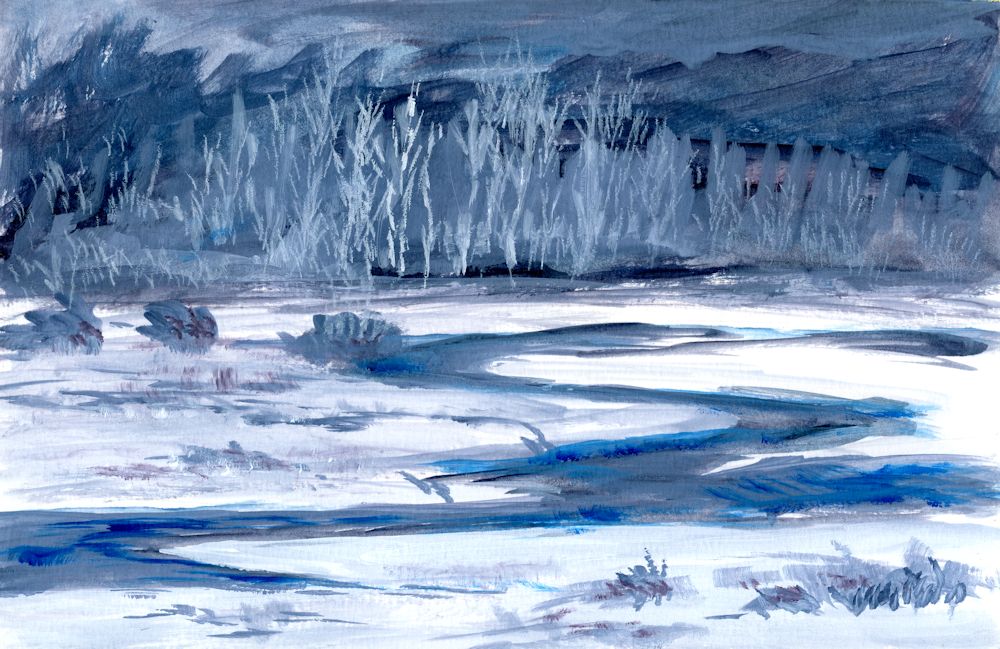
Stage 1: A large amount of a mix of Phthalo Blue and Cadmium Red Hue was made to make a cool blue grey and a basic monochrome sketch made in acrylic. Some further Phthalo Blue mixed with a little white was added in places. This will form a monochrome structure for a more colourful painting.
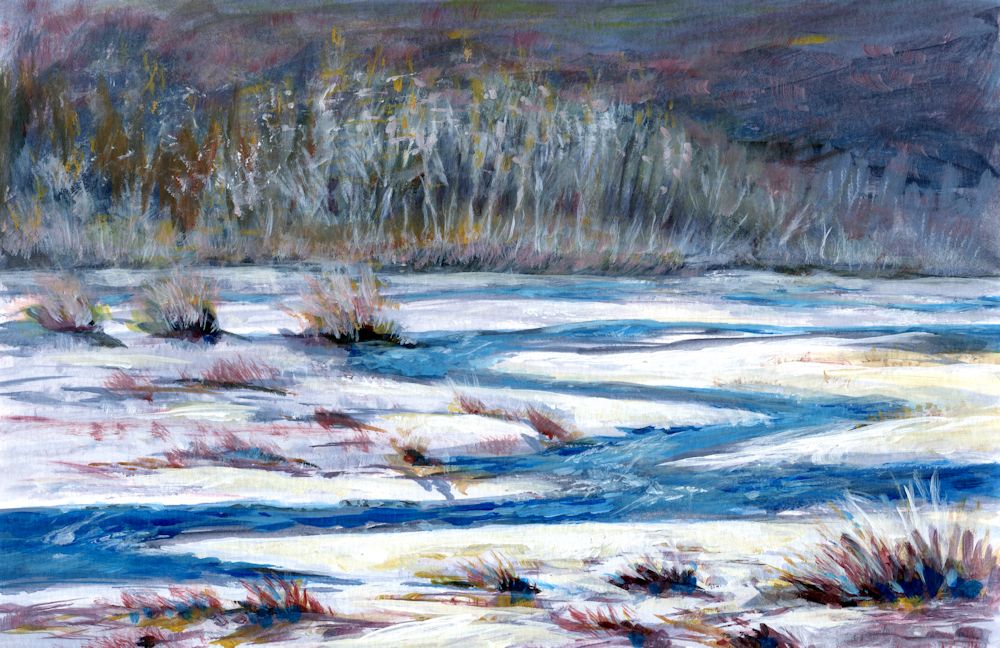
Acrylic by Jo
Completed with additions of mixes of Phthalo Blue and cadmium Red plus some Yellow Ochre
Starting with a warm colour
Burnt Umber and white was used for most of the first stages of the painting below, with added mixes of Phthalo Blue. The result was a much warmer sketch. I wanted the bridge to appear set into the landscape more and to show the green colour of the nearer hills. The bridge and tunnel are exactly the same size at each stage shown but note the illusion of the bridge looking smaller when painted closer in tone to its surroundings and the trees painted to cover more of the lower part of the bridge. In the final painting the tiny patch of pale riverbed/path/water, near the bottom left is the point of most contrast and appears much nearer to us than the bridge, reinforcing the illusion of depth in the painting.
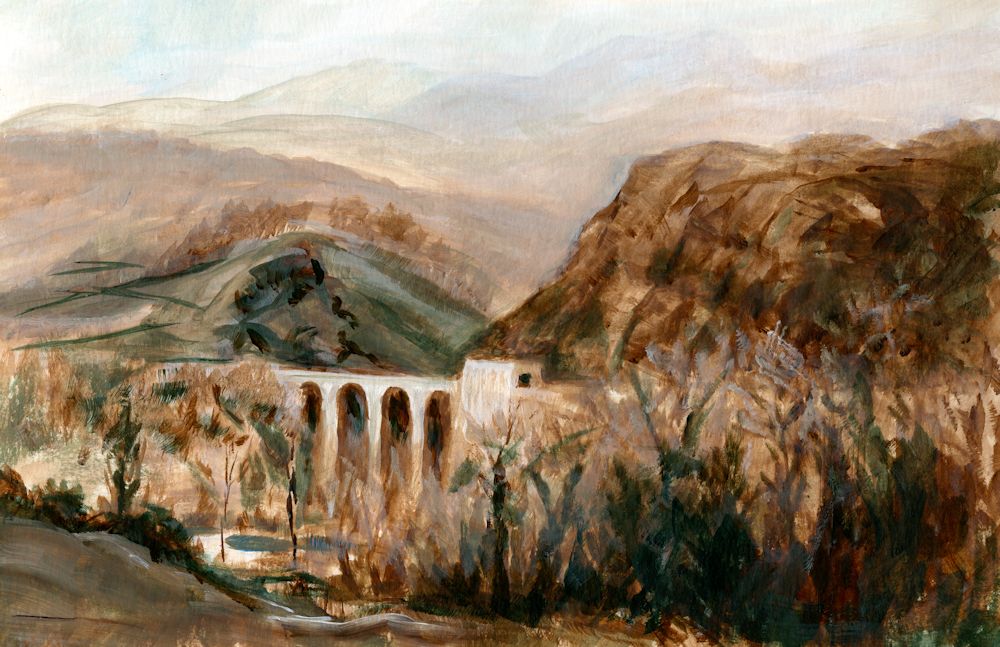
Stage 1: monochrome painting in Burnt Umber and white to
which mixes of Phthalo Blue with Burnt Umber have been added.
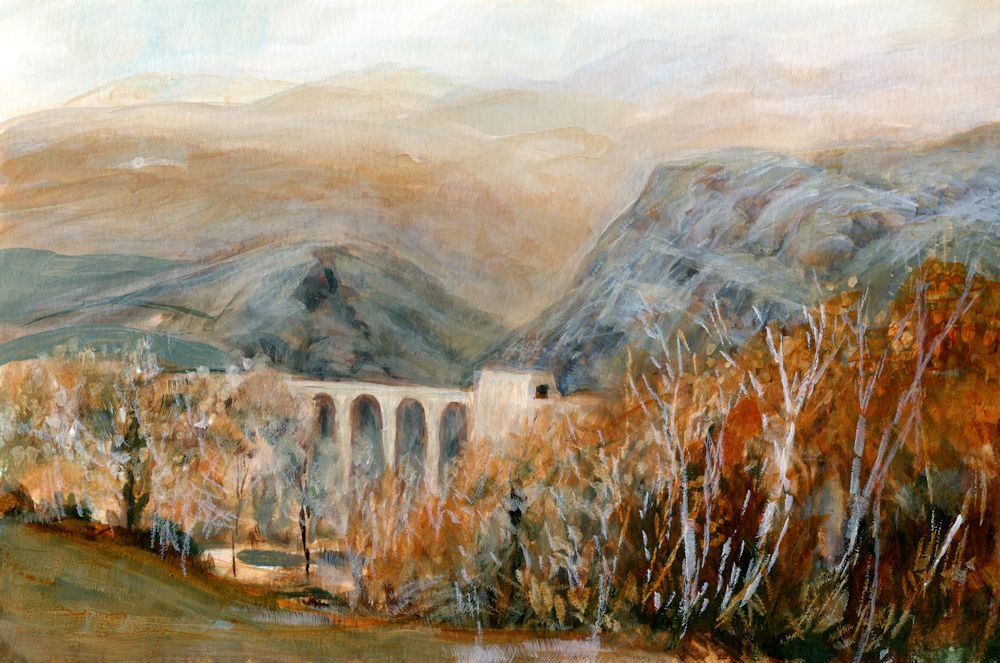
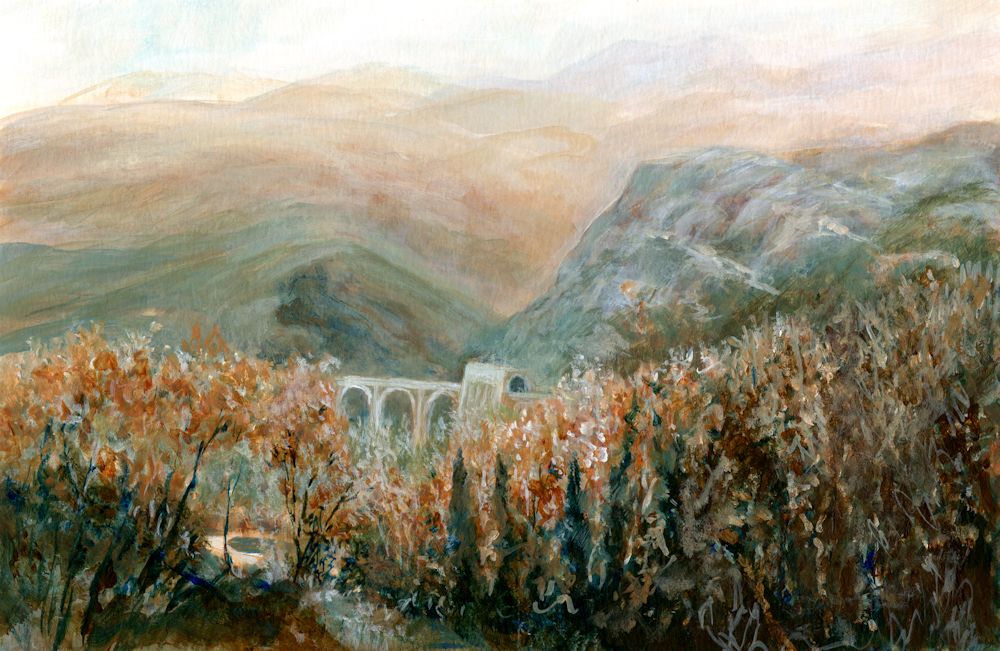
Acrylic by Jo
The completed painting. Although I liked the freshness of the initial colour sketch I wanted the bridge to appear more set into the landscape and to show the greenish tinge of the rocks in that part of the Parma Apennines. The foreground hills were reworked a little and the bridge and tunnel made very slightly darker so that it receded. The foreground and middle distance trees were also worked on and at some stage the bright Sienna foliage on the nearer trees may be reinstated.
Although not as exciting as the initial sketch the finished painting does remind me of a hazy day with the last remnant of Autumn colour in the trees rather than the brightly lit bridge of the first stage. Note how using a cool or warm colour can alter the atmosphere. The cold Phthalo Blue mixed with the warmth of Burnt Umber meant I could choose between keeping the painting warm as in the initial sketch or making it far colder in appearance.
This week I would like you to complete any unfinished work and to make a tonal painting in a rather different way. The challenge is to paint a contre jour subject. This could be a landscape against a bright sky or sunset, or a simple still life in front of a bright window. The subject will not be a completely stark silhouette but may appear dark and with subdued tones against the light.
I have put a few examples of contre jour works on the following Pinterest board, which includes some delightful paintings by Anton Mauve, link below:
https://www.pinterest.co.uk/jhall1282/limited-palettes/contre-jour/
Think carefully about how you would like to start the painting. If it is a sunset landscape it may be good to start by painting the sky especially in a work with trees and a low horizon. If it is a still life in front of a window you may like to paint the dark of the window frame and the objects before painting the light through the window. In either case think carefully about the pigments for the main tonal areas and whether your finished painting will have dark tones that tend toward warm browns or dark tones that tend toward cool blues and greens. Keeping to a restricted palette as we have done over the past few weeks, make a mainly tonal painting of a contre jour subject.
Your paintings:
Castle and Countryside: in and around Bardi
January 12, 2020
The dates have been finalized for another painting holiday at the Casa Bezzia studio in the hamlet of Pietracervara, just outside Bardi in the Parma Apennines. Such a delightfully undiscovered part of Northern Italy!
It will be 13th to 20th May, see the events page of this website for more details. Meanwhile I’m adding a few more photos of the time spent there last May and you can see more pictures of the wild flowers, Bardi and the surrounding countryside on previous blog posts by visiting the “Italy: in the Parma Appennines” blog category.
Wild Flowers in the Parma Appenines near Bardi
June 5, 2019
Two weeks ago I returned from tutoring a painting holiday at Casa Bezzia in the tiny hamlet of Pietracervara in the Parma Appenines.
In early May just across the road from the studio we found ourselves in an exquisite flower meadow with a backdrop of mountains. From my previous visit in November I had no idea how colourful it would be in May.
The bordering copses were spangled with bright blue Lithospermum purpurocaeruleum (Blue Gromwell) and wild strawberry flowers, and we found rocky crevices filled with cushions of pale magenta Saponaria ocymoides (Rock soapwort).
The following pictures show just some of the colourful plants we saw during our delightful stay. Do let me know if you find mistakes in the identification of the various species as my days as a Botany student are a little distant.
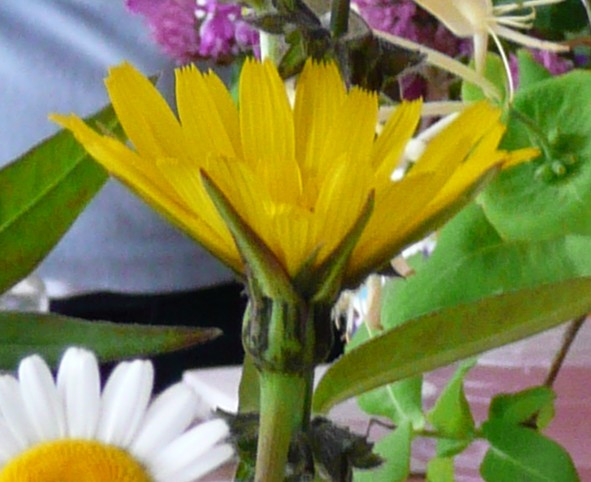
The goats beard is also called Jack-go-to-bed-at-noon as its flowers open early and close at midday.
www.casabezzia.com or contact
Sylvia Bell at info@casabezzia.com
Tel. +39 052571370
Castle and Countryside: Painting in and around Bardi in the Parma Apennines
November 23, 2018
Rocks and rivers, mysterious deserted villages, a bustling market, old boys gossiping or putting the world to rights, the smell of porcini mushrooms, full bodied red wine, dairy herds and parmesan cheese, early mists unveiling patterns of hills and valleys, sun and mist together weaving their magic!
I’m already looking forward to returning to Casa Bezzia in the hamlet of Pietracervara just outside Bardi in the Parma Apennines. This is where I shall be tutoring a painting holiday next May. Except for one, the photos were taken last week when I was able to visit many of the locations where we plan to draw and paint. Dates for the holiday are from Wednesday 8th May to Thursday 16th May 2019. Details about accommodation, the studio and booking information can be found at
www.casabezzia.com or contact
Sylvia Bell at info@casabezzia.com
Tel. +39 052571370
Bardi is a small town high above Parma in delightful hill country. The town is dominated by a medieval fortress on a rocky prominence overlooking the valley of the River Ceno. Almost every hamlet has a church and many have derelict buildings alongside those being sympathetically restored, and even in November the fruits of persimmon trees hang on the branches like little orange lanterns. This area has a feeling of mystery and of closely bound community perhaps born of its more recent and ancient history.
The studio at Casa Bezzia is well equipped with sketching easels and stools and drawing boards etc. The medium will be watercolour, and drawing media, perhaps introducing texture with collage. Other media can be accommodated and an information sheet for any materials and equipment you will need to bring will be circulated well before the holiday. The plan is to meet at Bologna airport as early in the afternoon as possible on the 8th May so that we can all be transferred together to Casa Bezzia.
Having been to see for myself I wholeheartedly recommend the scenery and Sylvia’s hospitality. So now I’m just counting the days!
If you have any questions about the teaching content or materials do contact me at E-mail: johall@mhstudios.co.uk
